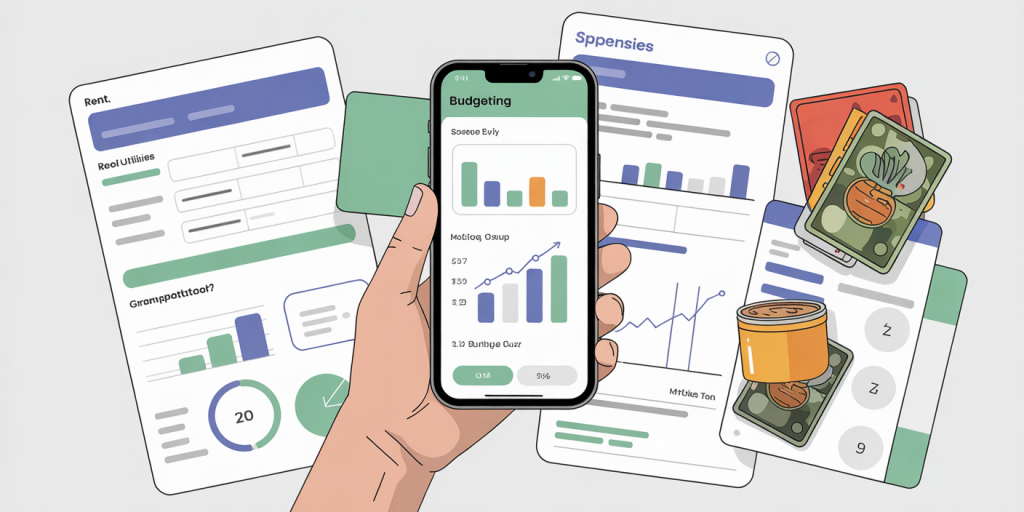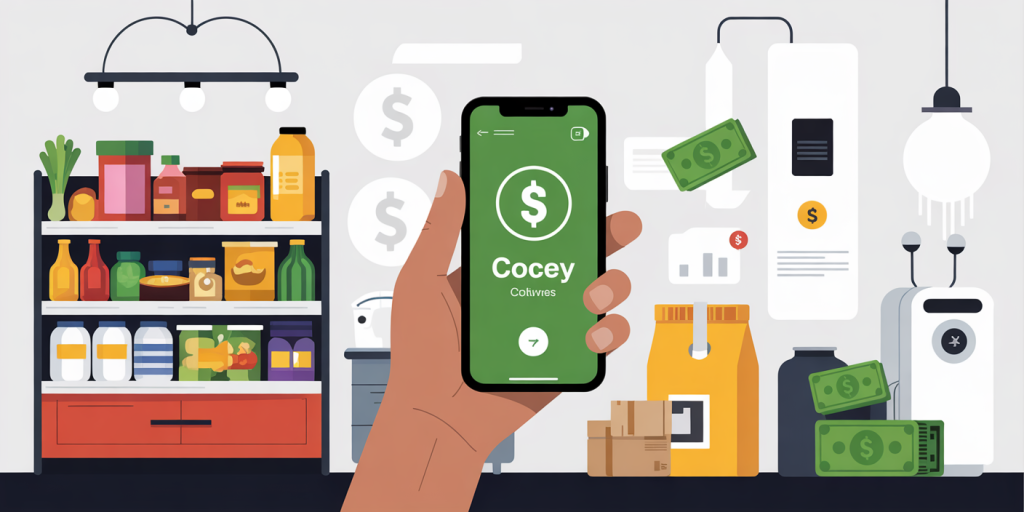How to Save Money on a Low Income: Practical Tips
Anúncios
Living on a low income can present significant financial challenges, making saving money seem like an impossible task. However, even with limited resources, adopting effective strategies and disciplined habits can help individuals build a financial cushion and work towards future stability. The key lies in careful budgeting, cutting unnecessary expenses, and leveraging available resources wisely. This article explores practical and actionable ways for people with low income to save money efficiently, illustrating each tip with real-world examples and supported by data and comparative insights.

Understanding the Financial Landscape of Low-Income Households
Anúncios
According to the U.S. Census Bureau, nearly 11.4% of Americans live below the poverty line, which significantly restricts their ability to save. Low income typically means limited discretionary spending, with most earnings dedicated to basic needs such as housing, food, transportation, and healthcare. A study by the Federal Reserve (2022) found that 36% of adults in the United States would struggle to cover a $400 emergency expense, highlighting the vulnerability of low-income earners.
Despite these challenges, data shows that 45% of low-income households managed to save some money over the past year by adjusting spending habits and using financial assistance programs effectively (National Endowment for Financial Education, 2023). This reflects the importance of strategic planning and mindful decision-making. To maximize savings on a tight budget, one must first analyze income and expenses carefully, establish realistic financial goals, and commit to sustained efforts toward those goals.
Creating a Detailed Budget: The Backbone of Savings
Budgeting is the fundamental step for anyone looking to save, but even more critical for those on a low income. A clear understanding of monthly earnings and expenditures enables you to identify areas where cuts are feasible and where savings can accumulate gradually. For example, Sarah, a single mother working a part-time job earning $1,200 a month, used budgeting apps to track every dollar, discovering she could save $50 a month by reducing food waste and opting for homemade meals instead of takeaways.
When creating a budget, categorize expenses into fixed and variable costs. Fixed costs include rent, utilities, and loan repayments, whereas variable expenses cover groceries, transportation, entertainment, and miscellaneous items. It’s essential to allocate an emergency fund category even if it’s small — starting with as little as $10 per week can build financial resilience.
| Expense Category | Average Monthly Cost | Potential Savings Strategy | Example Savings |
|---|---|---|---|
| Rent | $600 | Seek subsidized housing or negotiate lease | $50–$100 |
| Utilities | $100 | Use energy-efficient appliances, limit usage | $10–$20 |
| Groceries | $250 | Meal planning, use coupons | $30–$50 |
| Transportation | $75 | Carpool, public transportation | $15–$25 |
| Miscellaneous | $75 | Cut non-essential spending | $20–$40 |
This table illustrates common expenses and realistic savings strategies, which could collectively result in $125-$235 saved every month if applied consistently.
Cutting Costs Without Sacrificing Quality of Life
Reducing expenses doesn’t mean deprivation; it means conscious spending and finding cost-effective alternatives. Take grocery shopping as an example. According to the U.S. Bureau of Labor Statistics, the average American household spends approximately 10-15% of their income on food, but a low-income household may devote up to 25%. To counter this, shoppers can switch to buying generic brands or shop at discount stores. Additionally, planning meals around items on sale and buying in bulk when practical also helps cut costs.

For instance, James, who earns $1,500 monthly, saved $40 a month by switching from a national supermarket chain to a local ethnic market, where many staples were 30% cheaper. He also started using apps like Ibotta and Honey to get cashback and discounts, emphasizing how technology can amplify savings.
Moreover, reducing utility bills is a practical area to explore. Simple actions like turning off lights when not in use, unplugging devices, using energy-efficient bulbs, and setting water heaters to lower temperatures can make a noticeable difference. The U.S. Department of Energy estimates that using LED bulbs can reduce lighting costs by up to 75%, which for lower-income households translates to meaningful savings.
Increasing Income Through Side Hustles and Assistance Programs
While saving on expenses remains vital, growing income—however incrementally—can significantly enhance financial security. Secondary jobs or “side hustles” provide an effective way for low-income workers to boost their monthly earnings without sacrificing their main job. For example, delivering groceries, pet sitting, freelance writing, or participating in online surveys are accessible options that can bring in $100–$300 extra per month.
A survey by Pew Research Center (2023) found that approximately 27% of low-income earners engage in side gigs to supplement their income, with positive correlations seen in improved savings capabilities and reduced financial stress. Real-life case studies, like Maria, who supplements her primary job by tutoring English online two nights a week, demonstrate that consistent small income streams can help build a modest emergency fund.
Additionally, tapping into community resources such as food banks, utility assistance grants, and government subsidies including SNAP (Supplemental Nutrition Assistance Program) or LIHEAP (Low Income Home Energy Assistance Program) can relieve some financial pressures. These programs free up portions of the budget that can then be redirected toward saving.

Smart Debt Management to Avoid Interest Trap
Debt is a common stumbling block for low-income households, often exacerbated by high-interest rates on credit cards or payday loans. Mismanagement leads to interest piling up, reducing potential savings. Proactively managing debt involves prioritizing repayment of high-interest loans and avoiding new debts where possible.
Many low-income earners fall into a cycle of borrowing that results in hundreds of dollars lost in interest annually. For example, a $500 payday loan with a typical 15% interest rate per two weeks can cost over $1,200 in fees if not paid quickly (Consumer Financial Protection Bureau, 2023). Hence, seeking alternatives like negotiations with creditors for manageable payment plans or consulting nonprofit credit counseling services is crucial.
Comparatively, consider the impact of debt repayment on monthly expenses:
| Debt Scenario | Monthly Payment | Interest Rate | Interest Paid Over 6 Months | Potential Savings if Avoided |
|---|---|---|---|---|
| Payday loan ($500) | $200 | 15% biweekly | $700 | $700 |
| Credit card ($2,000) | $150 | 20% APR | $100 | $100 |
| Personal loan ($1,000) | $100 | 8% APR | $50 | $50 |
The table highlights how avoiding or managing high-interest debt drastically improves financial outlook, freeing up money to save.
Embracing a Savings Mindset: Small Steps, Big Differences
For many on a limited income, saving large sums at once isn’t feasible, but consistent small savings can accumulate over time. Even saving $5 or $10 weekly can add up to $250-$500 annually, providing a buffer for unexpected expenses.
Consider the “52-week savings challenge,” where you save $1 in the first week, $2 in the second, and so forth, resulting in $1,378 in a year. Adapting this approach to fit income levels—perhaps saving on alternate weeks or every two weeks—makes it realistic.
Automation is another strategy for success. Setting automatic transfers to a separate savings account right after payday prevents unintentional spending. Some banks offer no-fee accounts with easy mobile access to transfer small amounts daily or weekly, which can be particularly helpful for people living paycheck to paycheck.
Looking Ahead: Sustainable Financial Health on Low Income
Saving money on a low income requires persistence, creativity, and an adaptable mindset. However, the effort builds a foundation for not just short-term relief but long-term financial health. As income slowly improves through side hustles or job improvements, the strategies learned during leaner times become lifelong habits.
Future trends also suggest greater accessibility to financial technology tools tailored to low-income users. Apps that round up purchases to save spare change, micro-investment platforms, and digitally enabled financial coaching will continue to empower individuals previously underserved by traditional finance.
Policymakers increasingly recognize the importance of reinforcing social safety nets and financial literacy programs. Expanded access to affordable banking, credit-building products, and income-support initiatives promises to improve savings potentials for vulnerable populations.
Ultimately, the key lies in combining practical money-saving techniques with proactive income enhancement and ongoing learning. The journey of saving on a low income isn’t solely about sacrifice but about opportunity—turning small financial decisions today into a secure tomorrow.
